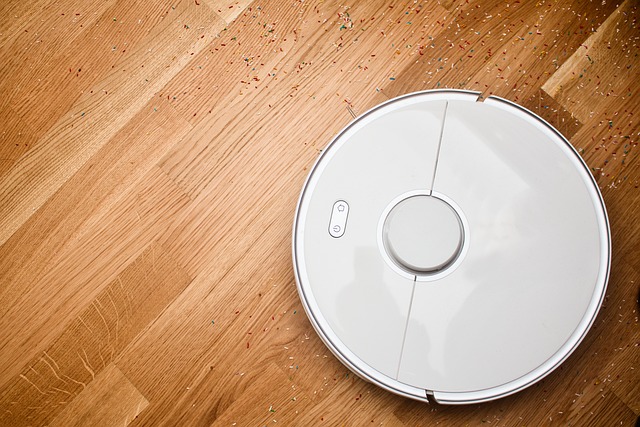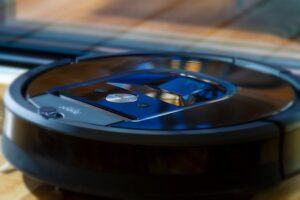In this blog post, we will explore the fascinating world of robot vacuums and their capabilities when it comes to handling stairs. Are robot vacuums equipped to efficiently clean staircases, or do they have limitations in this regard? We will delve into the technology behind robot vacuums and examine the various features that enable them to navigate and clean different surfaces within a home.
You might be wondering whether robot vacuums are designed to detect and avoid stairs, or if there are models specifically engineered to tackle multi-level homes. Additionally, we will address the practicality of using robot vacuums in homes with stairs and discuss any potential challenges that may arise. By the end of this post, you will have a comprehensive understanding of how robot vacuums interact with stairs and whether they are a viable cleaning solution for multi-story residences. So, let’s embark on this exploration of the capabilities of robot vacuums in handling the unique terrain of staircases.
How Do Robot Vacuums Detect Stairs?
Robot vacuums detect stairs using a combination of sensors and software algorithms. These sensors can include infrared sensors, cliff sensors, or cameras that allow the robot to detect changes in elevation. The infrared sensors emit light and measure the reflection to detect the proximity of objects, including the edge of stairs. This information is then processed by the robot’s software algorithms to make decisions about how to navigate around the stairs. Cameras, on the other hand, provide a visual input that the robot uses to identify and avoid stairs. The information gathered from these sensors allows the robot vacuum to create a map of its environment and navigate around obstacles such as stairs. By using these sensors and algorithms, robot vacuums can effectively detect and avoid falling down stairs while cleaning.
Are There Robot Vacuums Specifically Designed for Stairs?
Robot vacuums are primarily designed for cleaning floors, and as such, most traditional robot vacuums are not specifically designed to clean stairs. However, there are specialized robot vacuums equipped with features that allow them to handle stairs more effectively than standard models. These specialized vacuums are designed with features such as enhanced maneuverability, stronger suction power, and even the ability to transition from one level to another, making them more suitable for cleaning stairs.
Some robot vacuum models are equipped with advanced sensors and navigation systems that enable them to detect and avoid stairs, making them safer to use in multi-level homes. These specialized vacuums may also include edge-cleaning brushes and unique cleaning modes to effectively clean along the edges of stairs and other tricky areas. While not all robot vacuums are specifically designed for stairs, there are models available that are better equipped to handle multi-level cleaning tasks.

Can Robot Vacuums Navigate Around Staircases?
Robot vacuums are designed to navigate around staircases using various sensors and intelligent algorithms. These sensors allow the robot vacuum to detect changes in elevation and prevent it from falling down stairs. By using these sensors, robot vacuums can safely clean around the edges of staircases without the risk of falling.
The most common sensors used by robot vacuums to detect stairs are infrared sensors and cliff sensors. Infrared sensors emit beams of light and measure the time it takes for the light to reflect back, allowing the robot vacuum to detect the drop-off at the edge of the stairs. Cliff sensors work similarly by using infrared light to detect changes in floor height, allowing the robot vacuum to avoid falling.
In addition to infrared and cliff sensors, some advanced robot vacuums also utilize cameras and depth sensors to create a detailed map of the cleaning area. These visual sensors help the robot vacuum to recognize and avoid stairs, ensuring safe navigation around the staircase.
Robot vacuums are equipped with intelligent navigation algorithms that enable them to plan their cleaning paths around stairs. These algorithms take into account the layout of the room, the location of the stairs, and any obstacles in the way to ensure efficient and safe cleaning.
Some robot vacuums come with virtual wall barriers that can be used to create a no-go zone around the stairs. These barriers emit an infrared signal that the robot vacuum recognizes, preventing it from approaching the stairs and ensuring that it stays on the safe cleaning path.
Overall, robot vacuums are well-equipped to navigate around staircases, utilizing a combination of sensors, cameras, and intelligent algorithms to ensure safe and efficient cleaning without the risk of falling down the stairs.
What Safety Features Do Robot Vacuums Have for Stairs?
Robot vacuums are equipped with a range of safety features to prevent falls down stairs. These features include sensors, intelligent navigation algorithms, and virtual barriers.
The most common sensors used by robot vacuums to detect stairs are infrared and cliff sensors. These sensors enable the robot vacuum to recognize the edge of stairs and change its cleaning path to avoid falling.
In addition to infrared and cliff sensors, some advanced robot vacuum models incorporate cameras and depth sensors. These sensors allow the robot vacuum to create a map of the cleaning area and recognize stairs with greater precision.
Robot vacuums are designed with intelligent navigation algorithms that enable them to plan efficient cleaning paths while avoiding stairs. These algorithms ensure that the robot vacuum can navigate around staircases safely and effectively.
Virtual wall barriers are another safety feature that can be used with robot vacuums to create no-go zones around stairs. These barriers prevent the robot vacuum from approaching the edges of stairs, further enhancing safety during cleaning.
Overall, robot vacuums are well-equipped with safety features to navigate around staircases and ensure safe and efficient cleaning. These features make robot vacuums a reliable and convenient solution for maintaining clean floors in homes with stairs.
Maximizing the Efficiency of Robot Vacuums on Different Floor Levels
When using a robot vacuum on different floor levels, it’s essential to consider the layout and potential obstacles on each level. Some robot vacuums come with multi-floor mapping capabilities, allowing them to efficiently navigate and clean multiple levels of your home. These vacuums use advanced sensors and technology to create accurate maps of each floor, optimizing their cleaning routes and ensuring comprehensive coverage.
To maximize efficiency, it’s crucial to set up virtual boundaries or no-go zones to prevent the robot vacuum from attempting to clean stairs or areas where it could fall. By customizing these boundaries using the accompanying mobile app or control panel, you can guide the robot vacuum to focus solely on the designated floor, enhancing its overall performance. Additionally, some advanced robot vacuums are equipped with the ability to recognize and avoid stairs automatically, further streamlining the cleaning process.
When transitioning between floor levels, it’s beneficial to ensure that the robot vacuum’s charging dock is conveniently located on each floor, allowing it to recharge and resume cleaning without manual intervention. This setup enables seamless operation, as the robot vacuum can autonomously return to its dock when needed, enhancing its overall efficiency and coverage across different floor levels. Moreover, regularly maintaining the robot vacuum, including cleaning its sensors and brushes, contributes to its optimal performance on various floor surfaces, ensuring consistent and thorough cleaning results.
The Bottom Line: Choosing the Right Robot Vacuum for Your Home
When selecting a robot vacuum for a home with stairs, it’s crucial to consider models equipped with advanced stair detection sensors and reliable navigation systems to avoid falls. Additionally, look for vacuums that offer virtual boundary setting capabilities to prevent them from approaching staircases.
Some robot vacuums are specifically designed to handle multi-level homes and are equipped with the ability to recognize different floor surfaces, allowing for seamless transitions from one level to another. It’s important to choose a model that offers efficient battery life to ensure it can cover multiple levels without frequent recharging.

